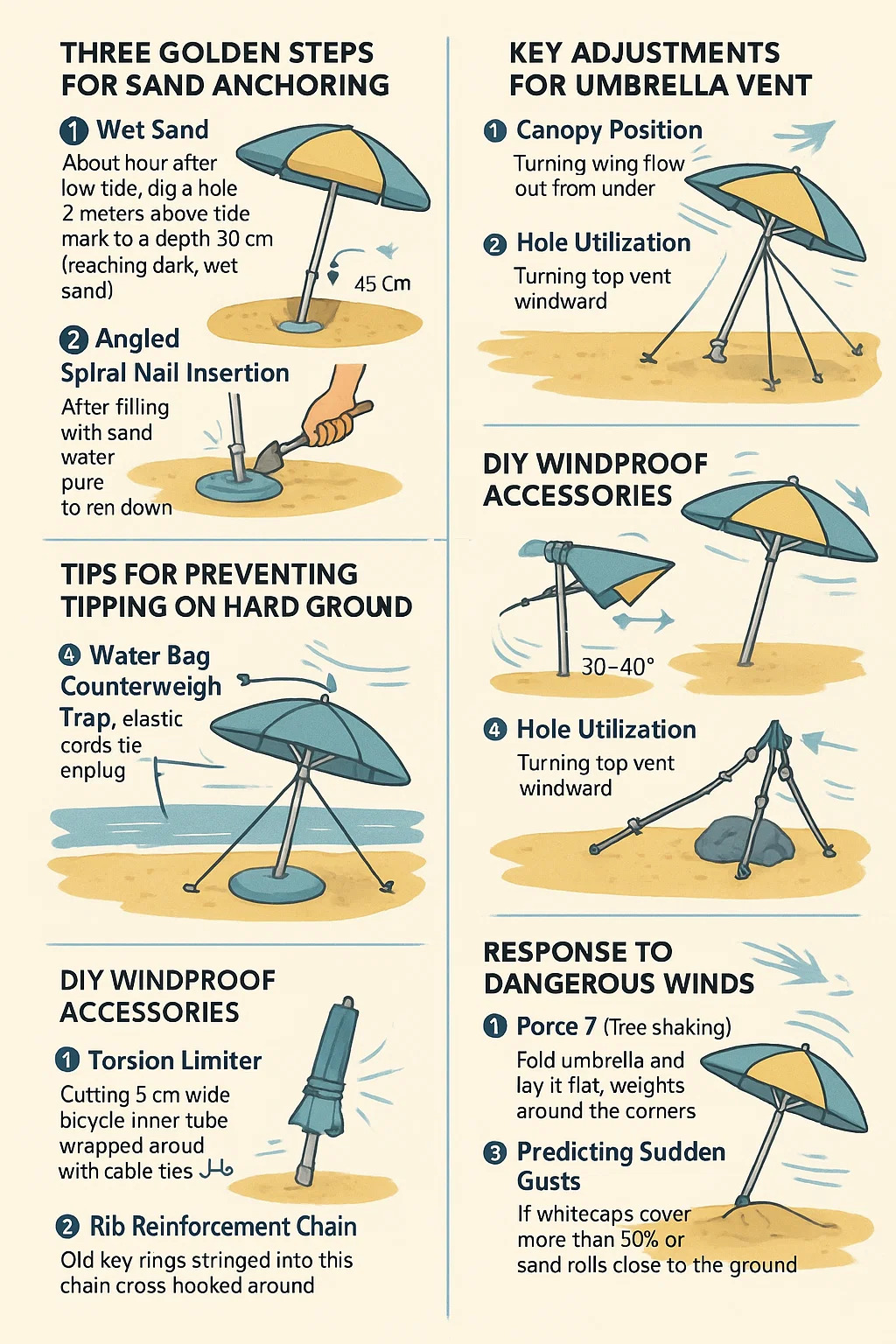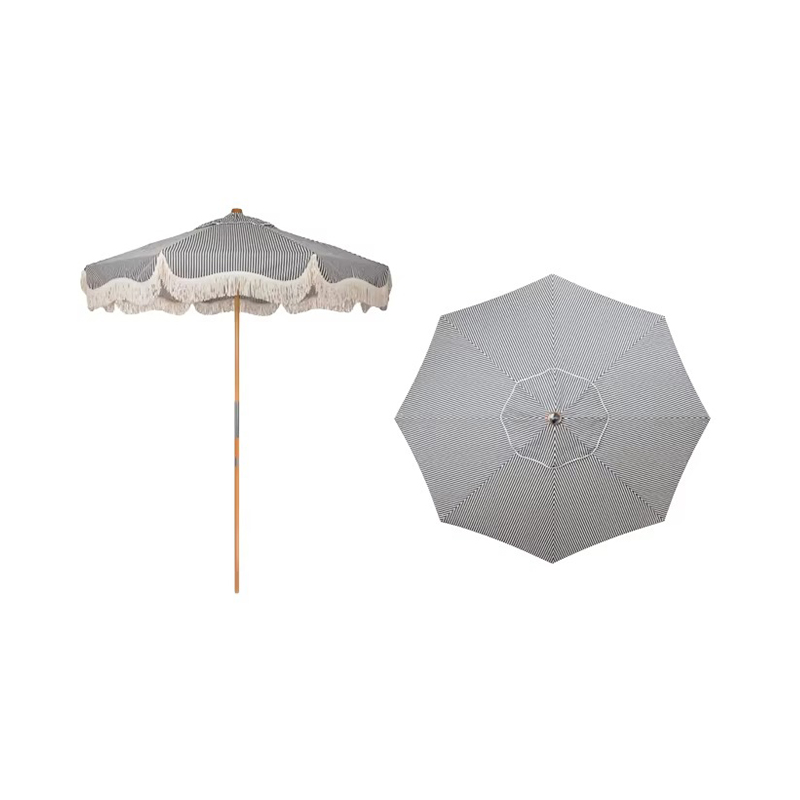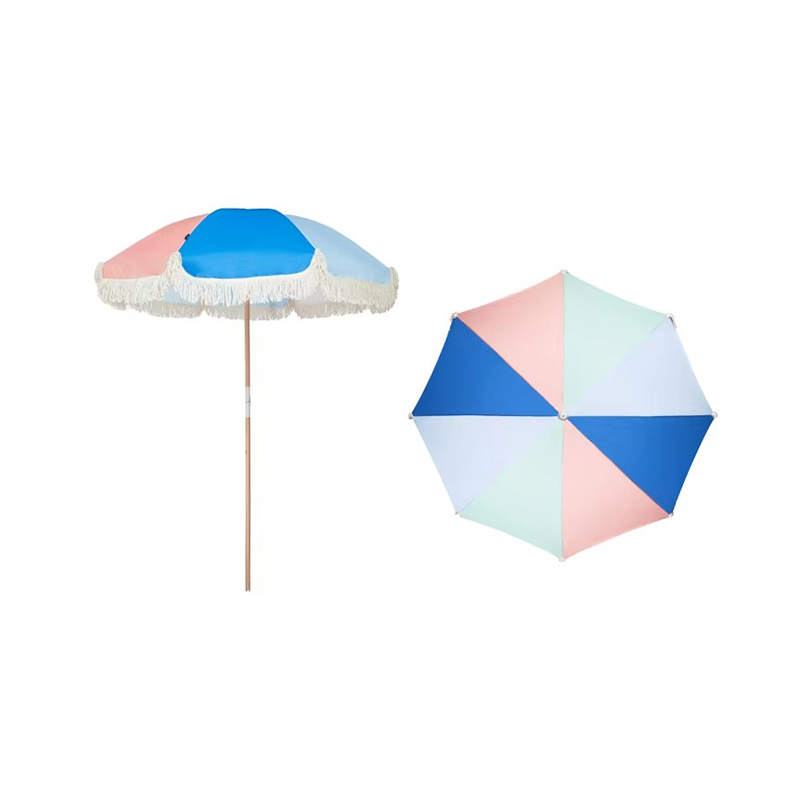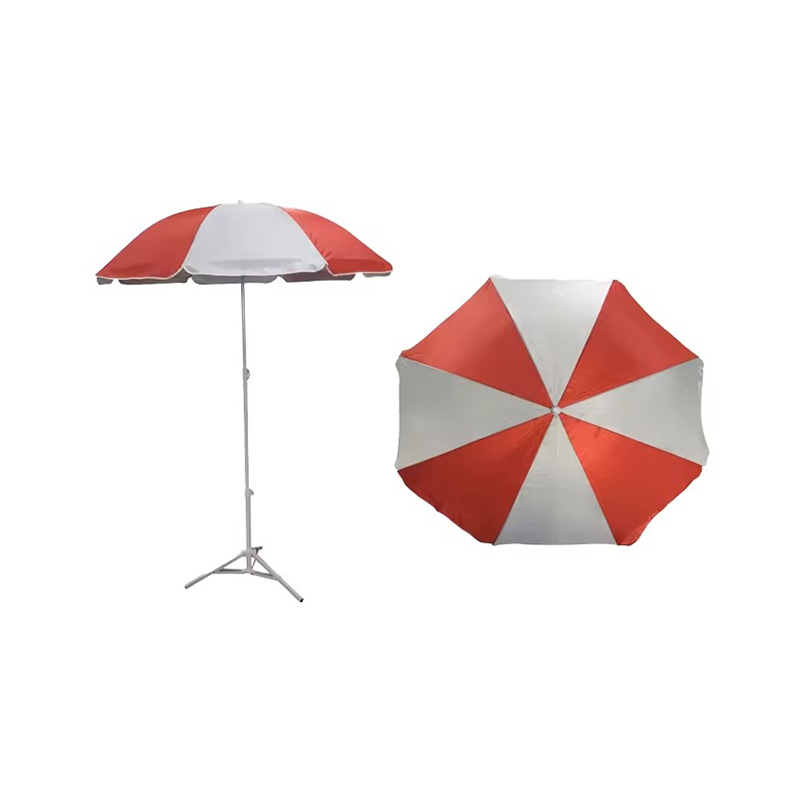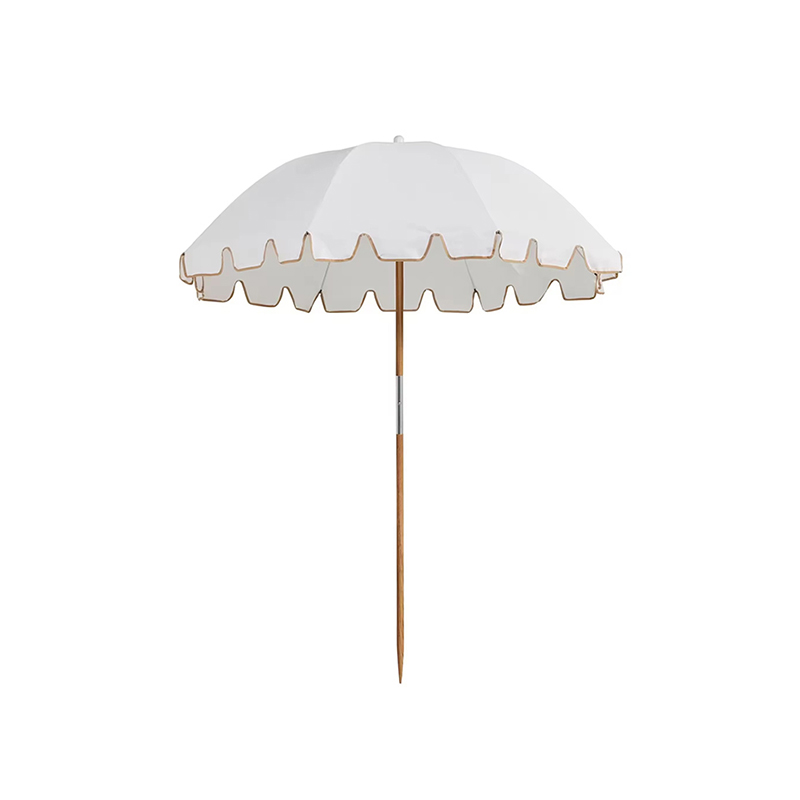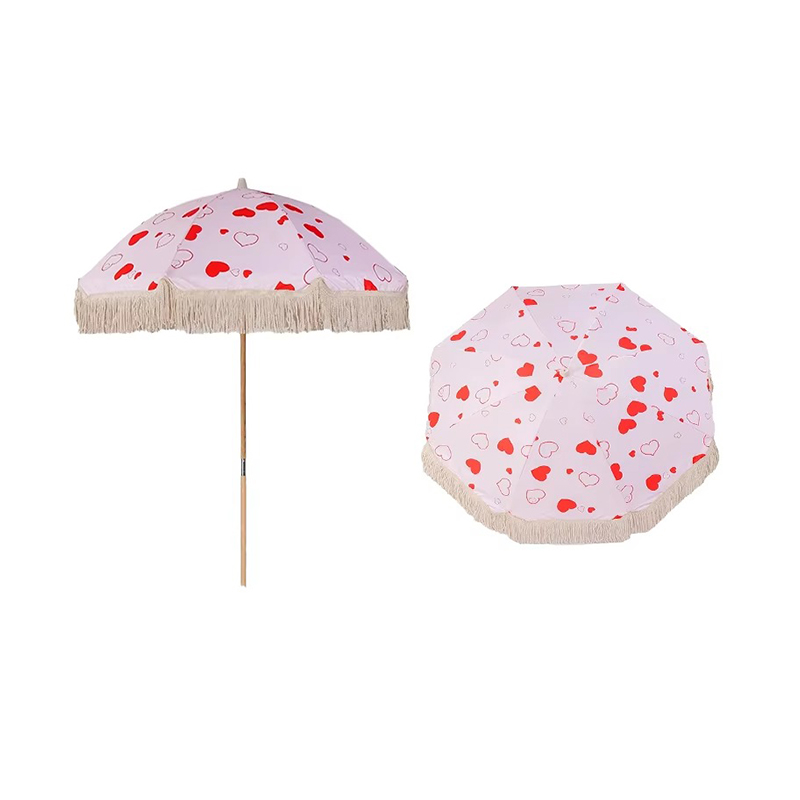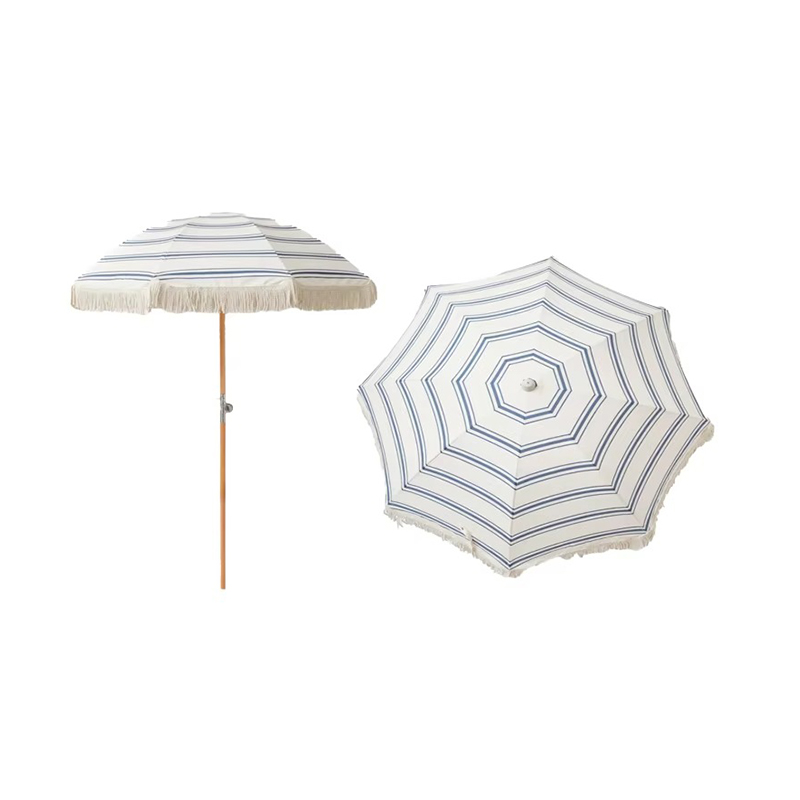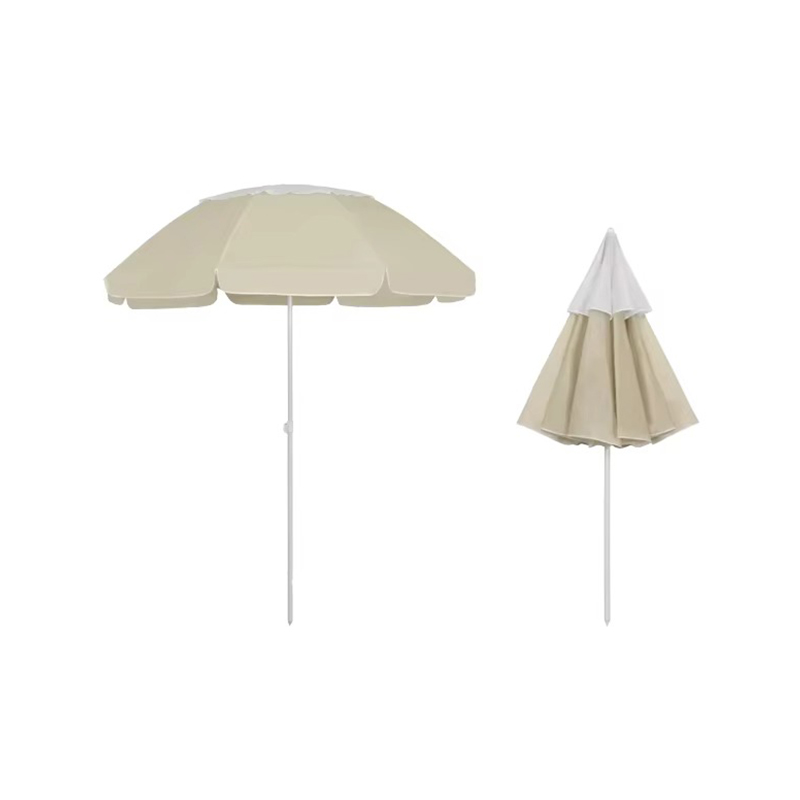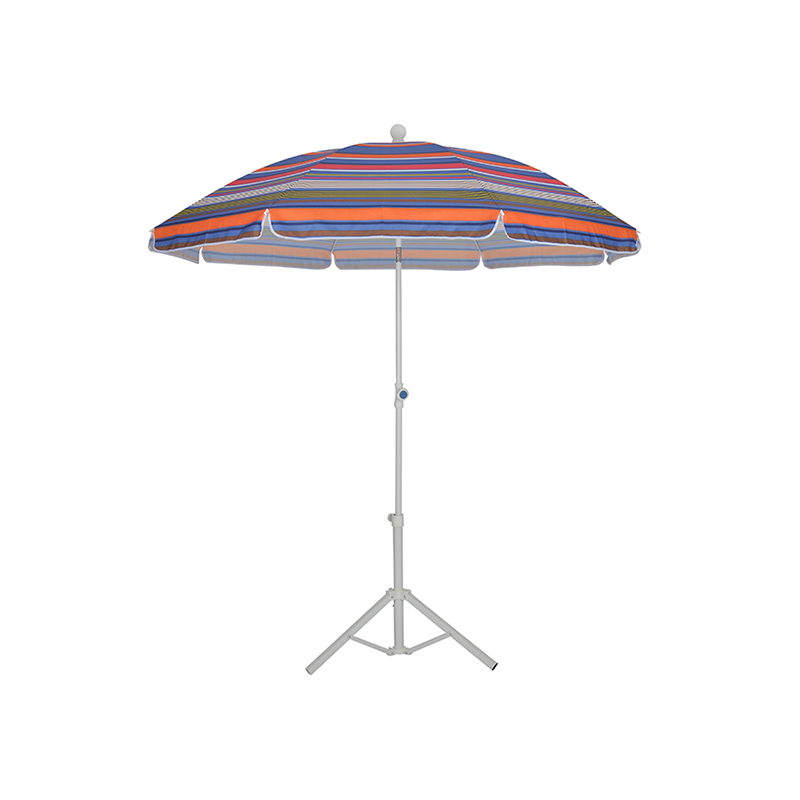How to Install a Beach Umbrella So It Doesn't Fly Away!
Posted by Admin
The following are practical installation tips to ensure a beach umbrella is stable and windproof:
**1. Three Golden Steps for Sand Anchoring
Wet Sand: One hour after low tide, dig a hole 2 meters above the tide mark to a depth of 30 cm (reaching the dark, wet sand). Wet sand has 10 times the adhesive strength of dry sand.
Angled Spiral Nail Insertion: Insert the nails at a 45° angle, facing away from the prevailing wind direction, until the crossbar touches the ground (the load-bearing capacity of a standard straight-in nail is half).
Sand Burial and Hammering: After filling the sand, pour water and tamp it down to form a cement-like hardened layer. After inserting the umbrella, press on the base for 10 seconds to apply pressure.
**2. Tips for Preventing Tipping on Hard Ground
Water Bag Counterweight Trap: Fill the base with water and sprinkle 1 kg of gravel (to increase viscous resistance). Use elastic cords to tie the base to the legs of a table or chair. Triangular Guy Rope Method: Tie three guy ropes to the middle of the umbrella handle at a 120° angle and pull toward the anchor points:
Anchor Point 1: Ground spike driven into a rock crevice
Anchor Point 2: Net bag filled with rocks
Anchor Point 3: Vehicle tow hook/tree trunk
**3. Key Adjustments for Umbrella Vent
Canopy Position: When the wind picks up, immediately tilt the umbrella 30-40° to allow the wind to flow out from under the umbrella rather than up into it (with the ribs parallel to the wind direction).
Hole Utilization: Turn the top vent toward the windward side to ensure wind flows vertically through the umbrella rather than from the side (for umbrellas without holes, temporarily cut a coin-sized notch).
**4. DIY Windproof Accessories
Torsion Limiter: Cut a 5cm wide bicycle inner tube and wrap it around the column insertion point. Tighten with cable ties to eliminate any play.
Rib Reinforcement Chain: String old key rings together into a chain and cross-hook them around the rib joints (to prevent over-expansion and breakage).
**5. Response to Dangerous Winds
Force 7 (Tree shaking): Immediately fold your parachute and lay it flat, using weights wrapped around the parachute to hold down the corners.
Predicting Sudden Gusts: If the whitecap rate of waves exceeds 50% or sand is rolling close to the ground, enter windbreak mode.
